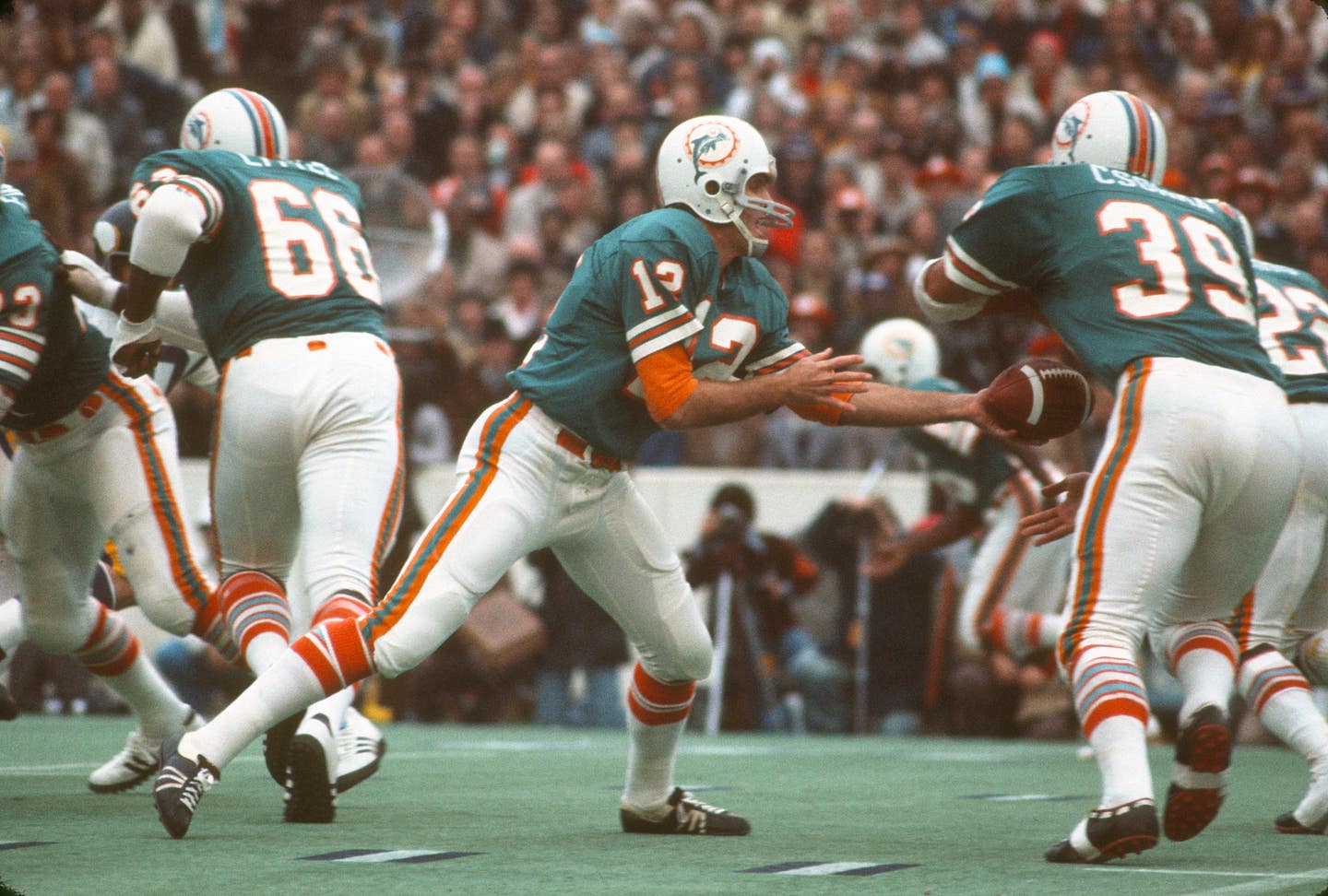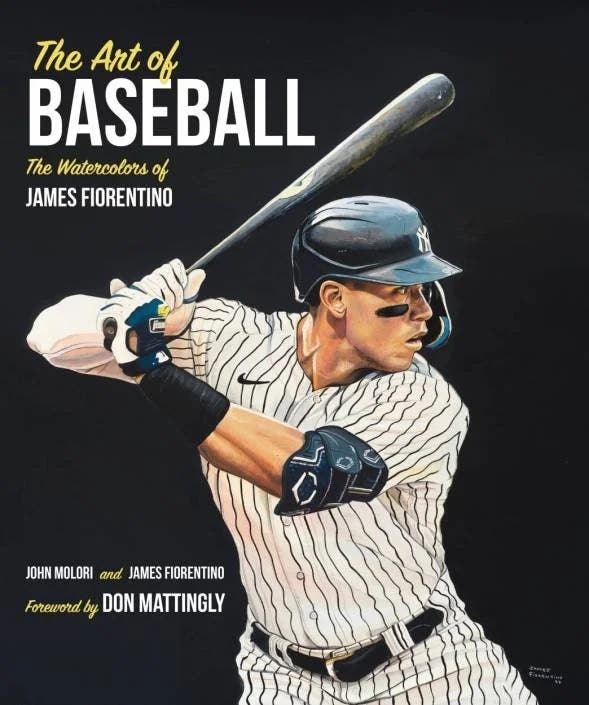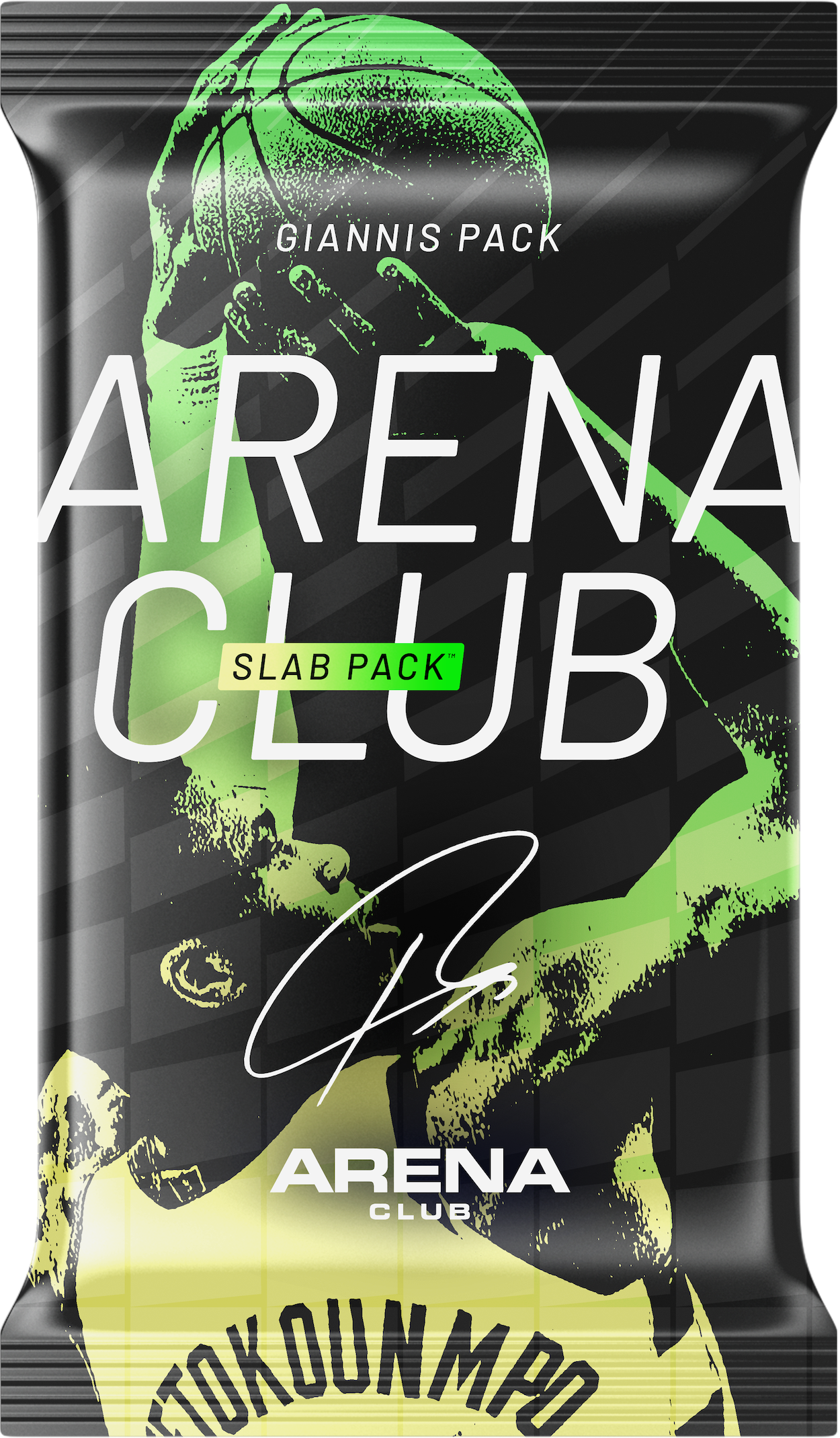
Terry Bradshaw
Like the Super Bowl champion Miami Dolphins, Topps made history with 1973 Topps Football
(EDITOR’S NOTE: To help celebrate SCD’s 50th anniversary, we look back at some of the top card sets from 1973, our first year of publication. We take a look at 1973 Topps Football.)
What’s that old saying? “No pressure, no diamonds.”
The 1973 Miami Dolphins not only had the pressure of trying to repeat as defending Super Bowl champs following their 17-game undefeated 1972 season, they had the added stress of seeing how long their historic unbeaten streak would continue.
The string was snapped in Week 2 against the Oakland Raiders, but the Phins swam to bigger glory by season’s end, avenging the regular-season loss to Oakland in the playoffs, and then winning another Lombardi Trophy — and a ring for each player that came with a couple of diamonds.
While Miami made a huge splash again in 1973, Topps produced their own cannonball into the deep end of the pool with their “Biggest Series Ever,” as the wax pack wrappers announced, when it rolled out a 528-card set, doubling the previous year’s regular output (not counting the mainly test-marketed 1972 Topps Football high numbers).
The early 1970s Dolphins had the “No-Name Defense.” In 1973 Topps demonstrated more of a “no-holds-barred offense” as they punted the cards distributed by series strategy and issued them all at once. That meant you could conceivably get the set-starter (NFL Rushing Leaders) and its polar opposite, Chiefs safety Mike Sensibaugh (#528), in the same pack.
While Topps had a new strategic gridiron plan in ’73, collector Bob Forer, a freshman in college at the time, had Strat-O-Matic football. Forer, who owns one of the top-ranked collections of the 1973 issue on the PSA Set Registry, summarized that story:
“My brother and two of my best friends came to me and said we have to form a Strat-O-Matic football league,” he said.
Puzzled by the proposal, Forer replied, “What are you talking about?” But once the board game concept was explained, he was ready for kickoff.
“We set up rosters and we filled our teams up with cards from the 1973 Topps football set,” Forer said.
A full league with a full season ensued and eventually concluded with an awards banquet.
“It was so much fun we continued using this form to play five or six more years,” he recalled. “So this was a blast for me to collect the cards.”
Fifty years later, the California resident ticks off his favorite cards from the set like an unchallenged running back high-stepping into the end zone.
“The Franco Harris rookie (#89), Lance “Bambi” Alworth (#61), some of the Dolphins like Norm Evans (#188) and Larry Little (#440) with the magnificent blue sky behind them, and Mercury Morris (#48), who is blowing a bubble with bubble gum while on the sidelines.”
NEW RELEASES: New card sets just in time for Christmas
Unlike gum that can quickly go stale, interest in the ’73 collection, Forer noted, retains a high level of freshness.
“The people that know what the set has to offer find it really popular,” he said. “There are oodles of Hall of Famers [about 70 when counting a few in the subsets], that’s a collection in itself. Or how about the ’72 Dolphins, the perfect-season team, the Steelers, the Raiders, virtually every team has a Hall of Famer in the set, and all the rookies.”
While some find the set design bland, including the airbrushing away of team logos on the helmets, Forer can live with that.
“I like the look of the set,” he said. “It’s nice and clean and the photography is really good.”
ROLL CALL
Nearly a decade ago humorists Key & Peele concluded their five-season run on Comedy Central. In January 2015 they even had their own Super Bowl Special.
One of the comedic duo’s most famous sketches (available on YouTube) highlights Key in the titular role in the “Substitute Teacher,” where he has a “different take” on interpreting student’s names. When checking attendance, just imagine how frustrated this easily agitated and disrespected character might have been with some of the player names in the 1973 Topps football set: Chip Glass (#203), Happy Feller (#304) and Fair Hooker (#429). Plucking a quote from Key’s wound-too-tight teacher character, he would utter: “OK, so that’s how it’s gonna be, y’all wanna play.”
Top rookies in the issue, in addition to the aforementioned Franco Harris, include: Art Shell (#77), Ken Anderson (#34), Ken Stabler (#487) Jack Ham (#115), Jack Tatum (#288) and Jack Youngblood (#343).
Among the set’s more established stars: Terry Bradshaw (#15), Larry Csonka (#100), “Mean” Joe Greene (#280), Bob Griese (#295), Dick Butkus (#300), Bob Lilly (#450), Roger Staubach (#475) and O.J. Simpson (#500), who in ’73 became the first running back to rush for over 2,000 yards in a season.
The last base cards of a few Hall of Famers also joined the pasteboard parade in ’73: Joe Namath (#400), even though he still played a couple more seasons with the Jets, as well as John Mackey (#118) and Johnny Unitas (#455), the San Diego Chargers duo.
As expected, the superstars in the set have some of the biggest population numbers via PSA — Harris with about 3,000 samples, and Stabler with some 1,900 lead the way.
Some of the commons, meanwhile, only have about 30 to 50 examples in the hard plastic shell from PSA and present a formidable challenge for one’s graded collection.
“Just in the last few months I completed my 1973 set with a Ray May [#132] of the Colts and I got it in a [PSA] 7,” Forer noted. “That one hurt,” mainly because the rest of his set is PSA 8s and 9s.
The Colts linebacker’s card (with 37 total samples) is “short-graded,” as Forer calls it, in PSA’s Population Report. For our purposes, looking at the entire set, “short-graded” is defined as cards with 50 or less PSA slabbed examples — and that covers nearly 10 percent of the cards from that Pop Report. Conversely, about 20 percent of the issue shows up in at least triple digit numbers in this census.
CHECKING ALL THE BOXES — OR NOT
In addition to four series checklists within the base set, the 1973 football issue did have other checklist cards orbiting the offering as the average wax box front panel touted “Extra! Team Checklist in Every Pack.” The team checklists are not part of the set, but if in undisturbed and generally solid shape, the roster of players per franchise frequently changes hands in the hobby for a couple dollars per card.
A raw ’73 Miami Dolphins checklist in Excellent condition, however, recently sold for $13 on eBay and a PSA 9 (Mint) Kansas City Chiefs checklist realized $187.
With around 63,000 ’73 football cards in PSA holders, for instance, the set stacks up well overall against others of the era in encapsulated form and Forer said he firmly believes its demand a decade from now will hold up.
“People will realize just how many Hall of Famers, rookies and second-year cards there are in this set,” Forer said, as well as “short-graded” cards and subsets.
“The set speaks for itself.”
Who knows, that collection’s summary might even spark a smile from Saints kicker Happy Feller. No pressure.
BIG PRICES FOR A BIG SERIES
Here are some recent auction results of cards from the 1973 Topps Football set. (Prices are rounded to the nearest dollar.)
Ken Riley (#171) PSA 9 $912
Franco Harris (#89) PSA 8 $282-$550
Joe Greene (#280) PSA 9 $371
Ken Stabler (#487) PSA 8 $277-$321
Terry Bradshaw (#15) PSA 8 $140
Roger Staubach (#475) PSA 8 $125
Joe Namath (#400) SGC 8 $93
Dick Butkus (#300) SGC 9 $57
Johnny Unitas (#455) PSA 8 $32-$61
Unopened wax pack, raw, $222
Complete set, raw, EX to NM $405-$650
— Doug Koztoski is a frequent SCD contributor. He can be reached at dkoz3000@gmail.com








